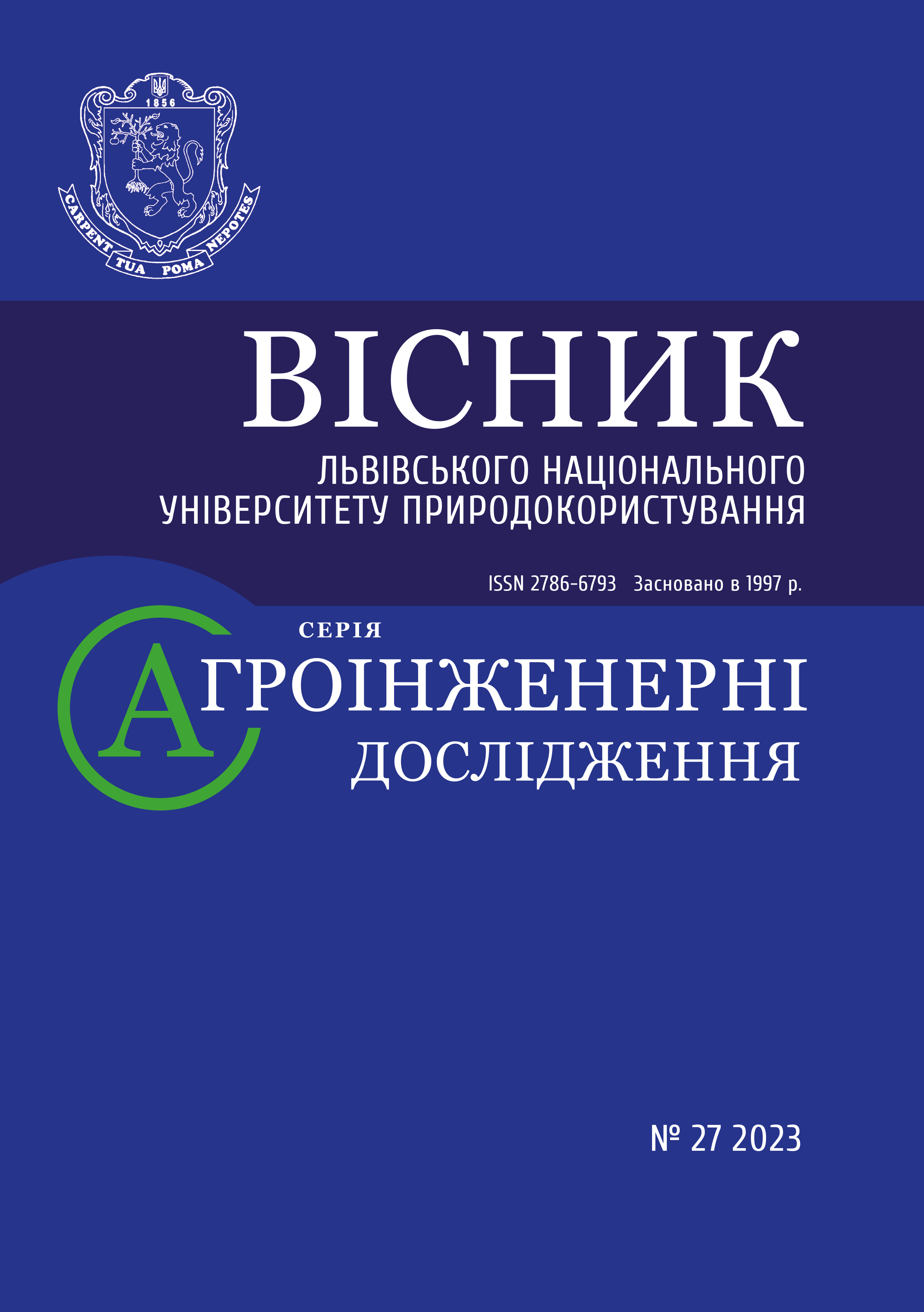Methodological approach to choosing military vehicles
DOI:
https://doi.org/10.31734/agroengineering2023.27.089Keywords:
military motor vehicles, mobility, method of analytic hierarchy, rapid situation assessment, a person carrying out the assessmentAbstract
It is important to understand that it may take a while before the required number of military vehicles of different classes and tonnage can be produced. As a result, there could be a problem in quickly and completely solving this issue. The best way to address this problem is to choose wheeled vehicles that are most suitable for domestic conditions based on their technical characteristics and indicators to adequately complete the wheeled vehicle fleet of the Armed Forces of Ukraine and the units of the National Guard of Ukraine.
After analyzing the wheeled vehicle fleet of the main countries that manufacture military vehicles and reviewing normative and technical documents on mobility issues, the author has proposed approaches to define mobility in complicated Ukrainian conditions. Specifically, mobility is a complex indicator that encompasses speed, maneuverability, controllability, cross-country ability, stability, and autonomy of military vehicles (MV).
The research proposes a methodological approach to quickly assess the situation using the method of analytic hierarchy, which takes into account the technical criteria used to select wheeled vehicle equipment.
The method of analytic hierarchy involves constructing a hierarchical model, determining the eigenvectors and eigennumbers of square inverse symmetric matrices, and verifying the consistency of the results.
This approach enables ranking the basic properties of MV mobility and identifying those that are currently the most important for selecting military equipment. The selection criteria are based on the current legislative and regulatory framework concerning defense procurement at public expense.
The performed calculations help determine the weight share of each of the seven main technical indicators that significantly affect the mobility performance of military motor vehicles on the modern battlefield, as well as in assessments of other military equipment.
References
Arndt, K., Cormier, K., & Ryazanov, E. (2005). Value Chain Management and Overcoming Rural Poverty. Project Experience in Kyrgyzstan. Bishkek: Local Market Development. 50 p. [in Kyrgyzstan].
Badiul, M. H., & Kramarenko, V. A. (2013). Applying the method of analytic hierarchy in projecting and constructing. Construction, materials science, mechanical engineering, 70, 27-35. [in Ukrainian].
Issues of military procurement: Resolution of the Cabinet of Ministers of Ukraine of March 03, 2021 №363 (amended May 16, 2023) (2021). Retrieved from: https://zakon.rada.gov.ua/laws/show/363-2021-%D0%BF#n204 (Accessed 01 August 2023). [in Ukrainian].
Kulchytska, H. B., & Predko, L. S. (2008). Applying the method of hierarchy analysis when choosing projects in printing. Printing and publishing, 1, 51-60. [in Ukrainian].
Melnykov, O. V., & Kotliarevsky, Y. V. (2014). Increasing efficiency of environmental activity in printing. Scientific notes [Ukrainian Academy of Printing], 1-2 (46-47), 104-111 [in Ukrainian].
On military procurement: Law of Ukraine of July 17, 2020 № 808-IX (last amended February 24, 2023) (2020). Retrieved from: https://zakon.rada.gov.ua/laws/show/808-20#n414 (Accessed August 01, 2023) [in Ukrainian].
Ryzhakova, G., Petrukha, S., Petrukha, N., Krupelnytska, O., & Hudenko, O. (2022). Agro-Food Value Added Chains: Methodology, Technique and Architecture. Financial and Credit Activity Problems of Theory and Practice, 4(45), 385–395. [in Ukrainian].
Saaty, T. L. (2002). How to make and justify a decision: the analytic hierarchy process. Part 1. Examples and Applications. Systems Research and Information Technology, 1, 95–108. [in USA].
Saaty, T. L. (2003). The Analytic Network Process. Examples. Part 2.3. System research and information technologies, 4, 7–23. [in USA].
Saaty, T. L. (2003). Theory Analytic Hierarchy and Analytic Network Processes-Examples. Part 2.2. System research and information technologies, 2, 7–33. [in USA].
Saaty, T. L. (2003). Theory of the Analytic Hierarchy Process. Part 2.1. Systems Research and Information Technology, 1, 48–71. [in USA].
Saaty, T. L. (2003). Theory of the Analytic Hierarchy Process. Part 2.1. Systems Research and Information Technology. Issue №1. Р. 56-64. [in USA].
Semenyuk, E. P., Olyanyshen, T. V., Senkivsky, V. M., Melnikov, O. V., & Kotlyarevsky, Y. V. (2012). Ekolohizatsiya suspilʹstva: Sotsialʹna rolʹ ta modelyuvannya. Lviv: Ukrainian Academy of Printing. [in Ukrainian].
Shynkar, S., Brynzei, B., Rozumovych, N., & Kurliak M. (2019). Modeling the Effects of Key. Threats on the Economic Security of Industrial Enterprises. SHS Web Conf. Vol. 67. Retrieved from: https://www.shs-conferences.org/articles/shsconf/abs/2019/08/shsconf_NTI-UkrSURT2019_04010/shsconf_NTI-UkrSURT2019_04010.html (Accessed August 01, 2023). [in Ukrainian].
Some issues of military procurement for the period of martial law: Resolution of the Cabinet of Ministers of Ukraine of November 11, 2022 № 1275 (last amended July 18, 2023) (2022). Retrieved from: https://zakon.rada.gov.ua/laws/show/1275-2022-%D0%BF#Text (Accessed August 01, 2023). [in Ukrainian].
Trunova, O. V. (2013). Saaty method for making managerial decisions. Bulletin of Chernihiv National Pedagogical University. Ser. Pedagogical Sciences, 108.1. Retrieved from http://nbuv.gov.ua/UJRN/VchdpuP_2013_1_108_34 (Accessed August 01, 2023). [in Ukrainian].


